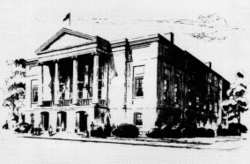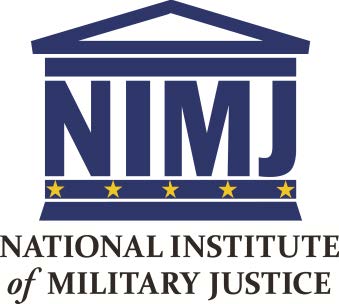|
Today, December 1, 2020, CAAF will hear oral arguments in United States v. Upshaw. CAAF granted review on the following two issues: (1) WAS THE MILITARY JUDGE’S IMPROPER PROPENSITY INSTRUCTION, IN VIOLATION OF UNITED STATES V. HILLS, 75 M.J. 350 (C.A.A.F. 2016), HARMLESS ERROR BEYOND A REASONABLE DOUBT?; AND (2) WAS A RECUSED JUDGE'S SUBSTANTIVE PARTICIPATION IN APPELLANT'S CASE AFTER HE RECUSED HIMSELF HARMLESS ERROR? Upshaw briefs here. Petty Officer Upshaw was first tried in 2015 by a general court-martial, and convicted of two specifications of abusive sexual contact against LCpl K.L.M. and one specification of sexual assault against Cpl K.I., in violation of Article 120, UCMJ. At that trial, the Government requested and received, over defense counsel’s objection, an M.R.E. 413 propensity instruction that this Court later found erroneous in United States v. Hills, 75 M.J. 305 (C.A.A.F. 2016). The NMCCA later set aside the specifications related to Cpl K.I. based on the Hills error. However, the NMCCA affirmed HM3 Upshaw’s convictions for abusive sexual contact of LCpl K.L.M. The lower court authorized a rehearing on the specifications it set aside and the sentence. Appellant unsuccessfully petitioned CAAF for review. Rather than retrying HM3 Upshaw on the specifications relating to Cpl K.I., the Government dismissed them without prejudice and proceeded with a sentence rehearing for the convictions involving LCpl K.L.M. On December 4, 2019, the NMCCA affirmed the findings and sentence, and CAAF granted HM3 Upshaw’s timely petition for review. PERTINENT FACTS On October 30, 2014, LCpl K.L.M. went to a bar in Oceanside, California, where he met HM3 Upshaw. They spent considerable time talking and drinking at the bar together, until HM3 Upshaw offered LCpl K.L.M. a ride home almost eight hours later. Before getting to HM3 Upshaw’s car, LCpl K.L.M. went with HM3 Upshaw and another person to a sex shop, by which point he was stumbling as he walked, and ultimately required HM3 Upshaw’s assistance getting into the car and adjusting his seat into a reclining position so he could sleep. While en route back to the base, Lance Corporal K.L.M. faded in and out of consciousness, and at one point recalls HM3 Upshaw unzipping his pants and touching his penis. Too drunk to push away HM3 Upshaw’s hand, Lance Corporal K.L.M claims he rolled over to face the window, but HM3 Upshaw continued to touch him, rubbing his leg. At this point, Lance Corporal K.L.M. asked HM3 Upshaw to pull over, and texted his “Team Leader,” Cpl Davison, to say HM3 Upshaw was “trying to rape me,” adding “I need help.” When Cpl Davison did not respond, Lance Corporal K.L.M. called his “Squad Leader” LCpl Johnston, and asked to be picked up. After hanging up, HM3 Upshaw continued to touch Lance Corporal K.L.M.’s crotch area through his clothes, and Lance Corporal K.L.M. pushed his hand away. LCpl Johnston arrived alongside Cpl Soto, another Marine in his platoon, approximately an hour after the alleged incident in the car happened, at which point HM3 Upshaw walked up to them and said he thought LCpl K.L.M. had a severe case of survivor syndrome, claiming that he had woken up several times in the vehicle screaming, until he eventually had to pull over and let him out. Ultimately, the members convicted HM3 Upshaw of abusive sexual contact. Separately, about four months after the encounter with LCpl K.L.M., Cpl K.I. met HM3 Upshaw at the very same aforementioned bar, where Cpl K.I. had been drinking since breakfast with his friend. After Cpl K.I. and his friend decided to leave, HM3 Upshaw offered to let him stay at his place, where he made them drinks. He claims his next memory was waking up to the feeling of something penetrating his anus, and when he next awoke, he realized he was undressed, and woke his friend while “crying hysterically”, saying that he had been raped and needed to get out of the house. A medical exam found HM3 Upshaw’s semen on Cpl K.I.’s genitals, around his anus, in his mouth, and on the right side of his chest, as well as exterior swelling and interior lacerations in his anus, and an abrasion on his penis. TRIAL JUDGE'S RULING At his initial court-martial, a panel of members with enlisted representation convicted Appellant, contrary to his pleas, of two specifications of abusive sexual contact and one specification of sexual assault against two victims in violation of Article 120, UCMJ. He was then sentenced to confinement for thirty-six months, reduction to pay grade E-1, and a dishonorable discharge. The Convening Authority approved the sentence as adjudged and, except for the punitive discharge, ordered it executed. NMCCA’s DECISION On direct appeal, the NMCCA set aside Appellant’s conviction for one of the victims for instructional error, but not the other. The court authorized a rehearing on the specifications it set aside and the sentence. THE ARGUMENTS Appellant argues that the evidence was not overwhelming and trial counsel made the Hills instruction central to their closing argument. Essentially, that ACCA cannot be certain beyond a reasonable doubt that the erroneous propensity instruction was harmless. Supporting his contention that the government cannot overcome the burden of proving beyond a reasonable doubt that Cpl K.I.’s allegations did not contribute to HM3 Upshaw’s conviction, Appellant makes two observations. First, Appellant points out that evidence is overwhelming where there is an admission, credible eyewitness testimony, or conclusive physical evidence, and that in determining harmlessness, CAAF considers the degree to which trial counsel relies on a given instruction and whether it may have confused the members. Second, Appellant points out that there were no admissions, eyewitness testimony, or conclusive physical evidence, and that the Government did in fact center its trial strategy on this propensity evidence and similarities between the allegations of LCpl K.L.M. and Cpl K.I. Additionally, Appellant argues that even though the military judge recused himself that he continued to provide advice on an evidentiary issue, thus substantively participating in Appellant's case. Appellant argues that this substantive participation undermined the public's confidence in the military justice system, violating the third Liljeberg Factor[1] In response, the Government argues that the government's case was overwhelming, given that the documentary evidence and testimony from multiple witnesses consistently demonstrated, beyond a reasonable doubt, that Appellant repeatedly sexually abused one victim, and that there is no reasonable probability that the erroneous propensity instruction contributed to Appellant’s conviction. In support of this argument, the Government argues that prejudice turns principally on the strength of the government's case, and explains further that the government's case was so strong here that there is no reasonable probability that the error contributed to the conviction. As to the second assignment of error, the Government relies on Liljeberg to establish whether recusal error here was harmless, and argues that none of the Liljeberg factors demonstrate prejudice to Appellant, and that Appellant urges relief based on speculation, showing no specific prejudice, contrary to Article 59(a), and therefore that any error was harmless. Noting that Appellant relies on the third Liljeberg factor despite failing to demonstrate specific prejudice under Article 59(a), as he must, the Government further notes that nothing in the Record supports a risk of injustice to Appellant. Even assuming the second Liljeberg factor can be resolved with Article 59(a), the Government argues there is no risk of injustice in other cases, and that there is no risk to public confidence where Appellant received exhaustive, impartial review both at trial and after. [1]The three Liljeberg factors: “(1) the risk of injustice to the parties in the particular case; (2) the risk that the denial of relief will produce injustice in other cases; and (3) the risk of undermining the public’s confidence in the judicial process.” Payton AlexanderSenior Intern
0 Comments
Your comment will be posted after it is approved.
Leave a Reply. |
Links
CAAF -Daily Journal -Current Term Opinions ACCA AFCCA CGCCA NMCCA Joint R. App. Pro. Global MJ Reform LOC Mil. Law Army Lawyer Resources Categories
All
Archives
April 2022
|



